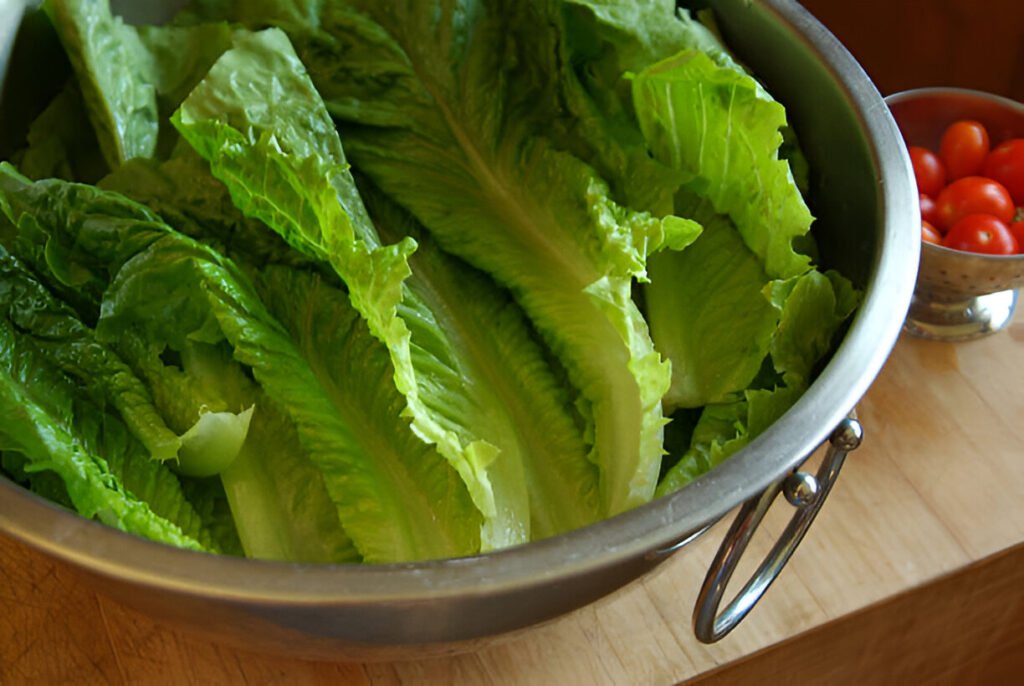Can Lettuce Be Left Out Overnight? Food Safety Facts You Should Know
We’ll also provide tips on properly storing and handling lettuce to ensure it stays fresh and safe to eat.
Lettuce is a nutritious and adaptable ingredient in several salads and sandwiches. It’s important to handle lettuce carefully. This helps prevent foodborne diseases.
A common question is if lettuce can sit out overnight without spoiling or becoming unsafe to eat. We’ll explore the safety of leaving lettuce at room temperature and the potential risks.
We’ll also provide tips on properly storing and handling lettuce to ensure it stays fresh and safe to eat.
Understanding Lettuce and Its Composition
Lettuce is made up of nearly 95% water, which makes it crisp and refreshing but also highly perishable. Its high moisture content creates the perfect environment for bacteria to grow if left at room temperature for too long. Without refrigeration, lettuce can wilt, get slimy, and smell bad. These are clear signs of spoilage.
Lettuce Types & Their Shelf Life
| Type | Shelf Life (Refrigerated) | Room Temperature Safety |
| Iceberg | 7-10 days | Wilts within hours |
| Romaine | 5-7 days | Becomes limp overnight |
| Butterhead | 3-5 days | Highly perishable |
| Leaf Lettuce | 3-5 days | Wilts and spoils quickly |
While lettuce is packed with vitamins A and K, its freshness determines its nutritional value. Spoiled lettuce loses nutrients and can hold bacteria such as E. coli or Salmonella.
This raises the risk of foodborne illness. Keeping it refrigerated is the best way to maintain both safety and quality.
Can You Leave Lettuce Out at Room Temperature Overnight?

You would rather not leave lettuce [1] overnight at room temperature; it is not recommended, as it can increase the risk of bacterial growth and foodborne illness.
Lettuce is a perishable food that should be stored at temperatures between 32-40°F to prevent spoilage and the growth of harmful bacteria.
At room temperature, about 70°F, bacteria can grow quickly. Such growth may cause food poisoning if you eat the lettuce.
If you let lettuce left out overnight, it may lose its texture and freshness, becoming limp and less appealing.
Refrigerate lettuce right after buying or using it. Store it in airtight containers or plastic bags. This method helps keep out moisture and bacteria.
Can You Freeze Lettuce?
While it’s technically possible to freeze lettuce, it’s not recommended as the texture and flavor will be negatively impacted.
Freezing causes the water inside the lettuce to expand and can cause the cell walls to burst. You don’t want your lettuce become wilted and mushy texture when thawed.
“The fight is never about grapes or lettuce. It is always about people.”
– Cesar Chavez, American Labor Leader
Additionally, freezing can affect the taste and nutritional value of the lettuce, making it less appealing to eat.
If you have extra lettuce that you can’t use in time, get creative! Try adding it to salads, sandwiches, or stir-fries [2].
Freeze lettuce by blanching it first. This keeps its texture and color. Use the blanched lettuce in cooked dishes, not in raw salads.
Signs That Lettuce Might Have Gone Bad
You need to pay attention to the below signs that your lettuce may not be in fresh condition.
- Discoloration: If the lettuce leaves are brown, yellow, or black, they are decaying and no longer fresh.
- Slimy texture: If the lettuce leaves feel slimy or slippery to the touch, this is a sign that they have become waterlogged and are breaking down.
- Foul odor: If the lettuce smells sour or rotten, this is a sign that it has begun to spoil and should not be consumed.
- Mold growth: If mold grows on the lettuce leaves, this is a clear sign that it has gone wrong and should be discarded.
- Wilting: If the lettuce leaves have wilted or lost their crispness, the result is a sign that they are no longer fresh and may have started to decay.
- Excessive moisture: If lettuce leaves are too wet or have moisture buildup, they can breed bacteria and spoil.
| Learn: How Do Restaurants Keep Lettuce Crisp? |
Tips & Tricks To Store Lettuce
- Rinse and dry: Before storing lettuce, rinse it thoroughly in cold water to remove dirt or debris. Then, pat the leaves dry with a clean towel or use a salad spinner to remove excess moisture.
- Store in an airtight container: Keep lettuce in an airtight container or plastic bag. This helps stop moisture from entering and wilting the leaves. Remove as much air as possible from the bag or container before sealing.
- Add paper towel: Place a paper towel in the container or bag with the lettuce. This helps absorb extra moisture and keeps the lettuce crisp.
- Store in the fridge: Store lettuce between 32-40°F to prevent spoilage. Store the lettuce in the crisper drawer to keep it away from other foods and help regulate the humidity.
- Wait to wash until you’re ready to use it: Excess moisture can spoil lettuce. Instead, store the lettuce dry and wash it just before using it.
- Use within a week: Lettuce is a perishable food that will only stay fresh for about a week. To ensure you’re using the freshest lettuce possible, try to use it within a few days of purchase.
FAQs on Lettuce Be Left Out Overnight
How long is lettuce good for out of the fridge?
Lettuce typically lasts 5-7 days in the fridge if appropriately stored in an airtight container or plastic bag.
How do you keep lettuce fresh overnight?
To keep lettuce fresh overnight, rinse and dry the leaves well. Then, put them in an airtight container or a plastic bag. Add a paper towel to the container or bag to help absorb excess moisture and keep the lettuce crisp. Store the container or bag in the fridge at a temperature between 32-40°F to prevent spoilage.
Key Takeaways
Don’t leave lettuce out at room temperature overnight. This can cause bacteria to grow and spoil the lettuce. Eating spoiled lettuce may lead to foodborne illness.
Refrigerate lettuce right after you buy it. Store it in airtight containers or plastic bags. This helps keep out moisture and bacteria.
It’s also important to spot spoilage signs in lettuce. Look for discoloration, slimy texture, bad smell, mold, wilting, and too much moisture.
References:
- https://www.almanac.com/plant/lettuce
- https://www.bbcgoodfood.com/recipes/collection/sandwich-recipes







